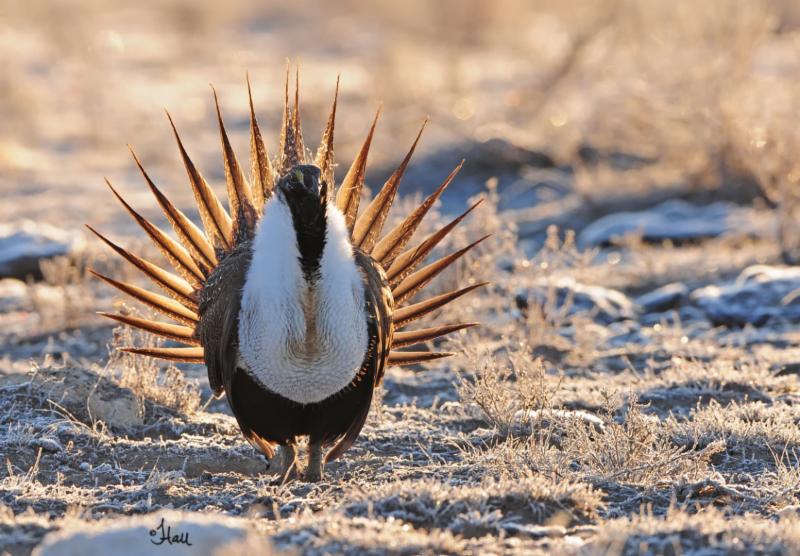'Dead Zone' May
Be 3rd Largest
On Record
By Mark Schliefstein/NOLA.com
The 2017 summertime low-oxygen "
dead zone
" in the
Gulf of Mexico
along the Louisiana and
Texas
shore could be the third largest ever measured, according to federally sponsored research results. The prediction is based on modeling of the nutrients that are carried into the gulf by the Mississippi and Atchafalaya rivers.
Three different sets of predictions were released by the National Oceanic and Atmospheric Administration and two groups of scientists working with the agency. Each prediction carried slightly different estimates of the size of the dead zone, where bottom waters contain 2 parts per million or less of oxygen, a condition known as hypoxia.
The dead zone got its name from the effects of low oxygen on
wildlife
and
fisheries
: Fish and
shrimp
tend to swim away to areas with higher oxygen, while bottom-loving organisms that are unable to move suffocate and die. Research earlier this year blamed hypoxia along Louisiana's coast for price spikes for jumbo shrimp.
|
|
Landscaping Goats: A Threat to Union Labor?
By Christopher Ingraham/The Washington Post
Photo by Don Lu/flickr
A Michigan chapter of the American Federation of State, County and Municipal Employees is warning that somebody is coming to take union jobs. Not immigrants, not robots - but goats.
After Western Michigan University rented a crew of 20 goats to clear weeds and brush this summer, AFSCME "filed a grievance contending that the work the goats are doing in a wooded lot is taking away jobs from laid-off union workers,"
according to the Detroit Free Press
.
If you haven't been paying attention, goat rentals are
all the rage in landscaping right now
. With their voracious appetites they can clear weeds and brush in areas that humans have a hard time reaching.
They're gentler on the environment than heavy landscaping equipment or chemicals. They will eat literally anything, including poison ivy.
|
Rice Farming Could Cure What Ails Salmon
By Emma Bryce/Anthropocene
Photo by NOAA Great Lakes/flickr
For decades in California's fertile Central Valley, a conflict has played out between wildlife and the agriculture that has slowly displaced it from this once-biodiverse habitat. But now a group of Californian researchers have shown that some kinds of agriculture might hold a solution for wildlife in the region: for the endangered Chinook salmon, local rice farmers could provide surrogate habitat that would allow these fish to thrive.
Centuries ago, when rainfall would transform parts of the Central Valley into a floodplain, it functioned like a salmon nursery: young fish that spawned in local rivers could grow and mature on the surrounding floodplain before
migrating via those rivers back to the sea
. But over the past two centuries, 95 percent of that former floodplain habitat has gradually been drained and converted into farmland. This has contributed to the California-wide
decline
of Chinook salmon.
One kind of agriculture that brings water back into this landscape is rice farming. Researchers have already noted its
benefits for migrating waterfowl
which have come to rely on the waterlogged fields as mid-flight rest stops. So the Californian scientists wanted to understand how beneficial this system could also be for fish.
|

Private Lands Key to Sage Grouse Conservation
By Ariel Wiegard/TRCP
Photo by USFWS - Pacific Region/flickr
Earlier this month, the Department of the Interior initiated a review of existing sage grouse conservation plans, which were designed to keep sage grouse off the endangered species list. The combination of those federal plans, state plans, and voluntary conservation efforts for grouse on private lands led the U.S. Fish and Wildlife Service to the historic decision to not list the species in September 2015. The review
has sportsmen and women concerned
that DOI is shifting its focus away from securing quality habitat, the most critical factor to conserving sage grouse, and toward less scientifically-sound population management techniques.
The review will deal primarily with public lands that are essential to survival of the species-in this case, 67 million acres of federally managed land in the sage grouse's core range-and it's possible that it will lead to less conservation and more energy development on those lands. Thankfully, sprawling cattle ranches that also provide crucial habitat are scattered among these public lands. If public land development ramps up, these private acres may become even more important than they already are to sage grouse.
It's imperative that we work to conserve habitat and sage grouse on both public and private lands. Fortunately, the 2018 Farm Bill, a massive legislative package that specifically funds private lands conservation,
is in the works
.
|

An Idea That
Is Sucking in Thousands of Converts
By Darryl Fears/The Washington Post
Photo by Dean Hochman/flickr
It started so innocently. A kid ordered a soda in a restaurant.
"It came with a plastic straw in it," Milo Cress recalled. He glared at the straw for a while. "It seemed like such a waste."
Not only did Cress yank the plastic from his drink, but he also launched a campaign, "Be Straw Free," targeting all straws as needless pollution. He knocked on the doors of restaurants in Burlington, Vt., where he lived at the time, and asked managers not to offer straws unless patrons asked. He was 9 years old.
Today Cress, 15, is one of the faces of a growing movement to eliminate plastic straws. They have been found wedged in the nose of a sea turtle, littering the stomachs of countless dead marine animals and scattered across beaches with tons of other plastics.
Why single out pollution as small and slim as a drinking straw?
|
|
|
|
|
|